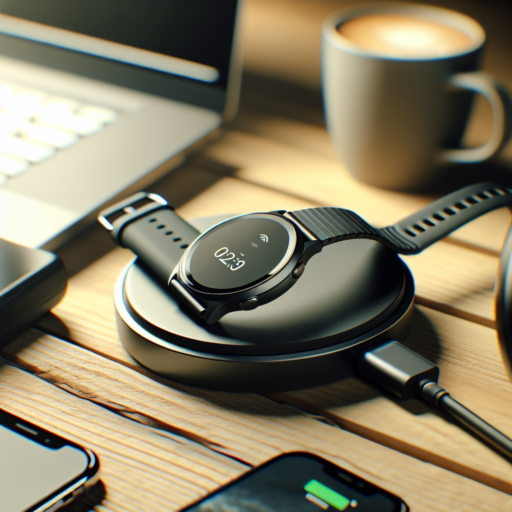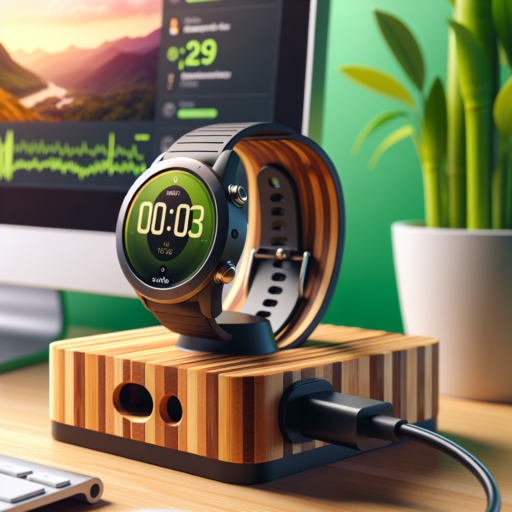How do I charge my smartwatch without a charger?
Charging a smartwatch without its dedicated charger can seem daunting, but there are a few alternative methods that can come to your rescue. Whether you’ve left your charger at home or it’s no longer working, you don’t have to let your smartwatch’s battery life dwindle to zero. Understanding these alternative charging solutions can ensure that your device remains powered up, even in less-than-ideal circumstances.
Using a Universal Charging Dock
One of the most convenient methods to charge your smartwatch without the original charger is by using a universal charging dock. These docks are designed to be compatible with multiple device types, including a wide range of smartwatch models. When selecting a universal charger, ensure it supports your device’s charging specifications to avoid any potential damage.
Leveraging a Power Bank
A power bank can serve as an excellent alternative for charging your smartwatch on the go. To use this method, you will need a power bank and a cable that is compatible with your smartwatch’s charging port. This setup is particularly useful for outdoor enthusiasts or individuals who are always on the move and may not have access to standard power outlets.
Despite these alternatives, it’s crucial to understand the importance of using the correct charging technique to maintain your smartwatch’s health and battery life. While these methods can prove useful in a pinch, they should not replace using the original charger when possible. Always refer to your smartwatch’s user manual for specific guidance on charging practices to ensure you’re not risking any damage to your device.
Can I use any charger for my smartwatch?
Choosing the right charger for your smartwatch is more complex than simply grabbing any available one. While it might be convenient to use any charger you have on hand, it’s essential to understand that not all chargers are created equal. Smartwatches are designed with specific power requirements, and using the wrong charger could potentially damage your device or impact its battery life negatively.
Most smartwatches use a magnetic charging system that aligns with the device’s charging pins, ensuring a secure and efficient charging process. The amperage and voltage requirements can vary significantly between different brands and even models within the same brand. Therefore, while some chargers might physically fit your smartwatch, they may not provide optimal charging conditions.
Compatibility and Safety
When considering whether you can use any charger for your smartwatch, compatibility and safety should be your primary concerns. Chargers that are not specifically designed for your smartwatch may not meet the necessary safety standards, leading to the risk of overcharging, overheating, or even causing a short circuit. To avoid these risks, it’s advisable to use the charger that comes with your smartwatch or a compatible alternative verified by the manufacturer.
No se han encontrado productos.
How do I charge my smartwatch with my phone charger?
Charging your smartwatch using your phone charger can be a convenient solution, especially when you’re on the go or don’t have the watch’s original charger handy. Most modern smartwatches and phone chargers use a USB connection, making them potentially compatible. However, there are a few things to consider to ensure a safe and efficient charging process.
Checking Compatibility
First and foremost, check the compatibility between your smartwatch and the phone charger. Look for the type of USB connector (such as USB-C or Micro USB) and ensure it matches. Additionally, verify that the electrical output of the phone charger aligns with what your smartwatch requires. Using a charger that delivers too much power can damage your device, while too little might not charge it effectively.
Step-by-Step Charging Process
- Locate the charging port on your smartwatch and identify the correct USB type.
- Connect the smartwatch charging cable to the phone charger’s USB port. If your smartwatch charges wirelessly, ensure your phone charger supports this function or use a compatible charging dock.
- Plug the phone charger into a power outlet. Some smartwatches will display a charging icon or light to indicate that charging has begun.
- Monitor your smartwatch during the charging process to ensure it does not overheat.
It’s essential to be aware of the charging requirements and protocols your devices support. Even though using a phone charger to charge your smartwatch can be incredibly convenient, always prioritize the longevity and health of your gadgets by adhering to manufacturer guidelines and safety considerations.
Do all smart watches charge the same?
When it comes to charging smart watches, many users wonder if all devices share the same charging mechanism. The answer is multifaceted, as various factors come into play, including the brand, model, and technology behind each smartwatch. While some charging principles are universally adopted, significant differences can be found across the spectrum of available devices.
Variety in Charging Methods
Most smart watches utilize one of a few common charging methods. The traditional method involves a charging cable that connects to a physical port on the watch. However, as technology advances, wireless charging has become increasingly popular. This method allows users to charge their smartwatch by simply placing it on a charging pad, enhancing convenience and reducing wear and tear on the device. Inductive charging, a type of wireless charging, is particularly prevalent among the latest models. Yet, despite these commonalities, the specifics, such as charging speed and connector types, can vary greatly among brands and models.
Brand-Specific Charging Technologies
Some brands have developed proprietary charging technologies, necessitating the use of special chargers. For example, Apple Watches use a Magnetic Charging Cable that aligns perfectly with the back of the watch, whereas Samsung Galaxy Watches benefit from WPC-based wireless charging. This indicates that, while the charging process may seem universally straightforward, the underlying technology and required accessories can differ. Users must be aware of their device’s specifications to ensure compatibility and optimize charging efficiency.




